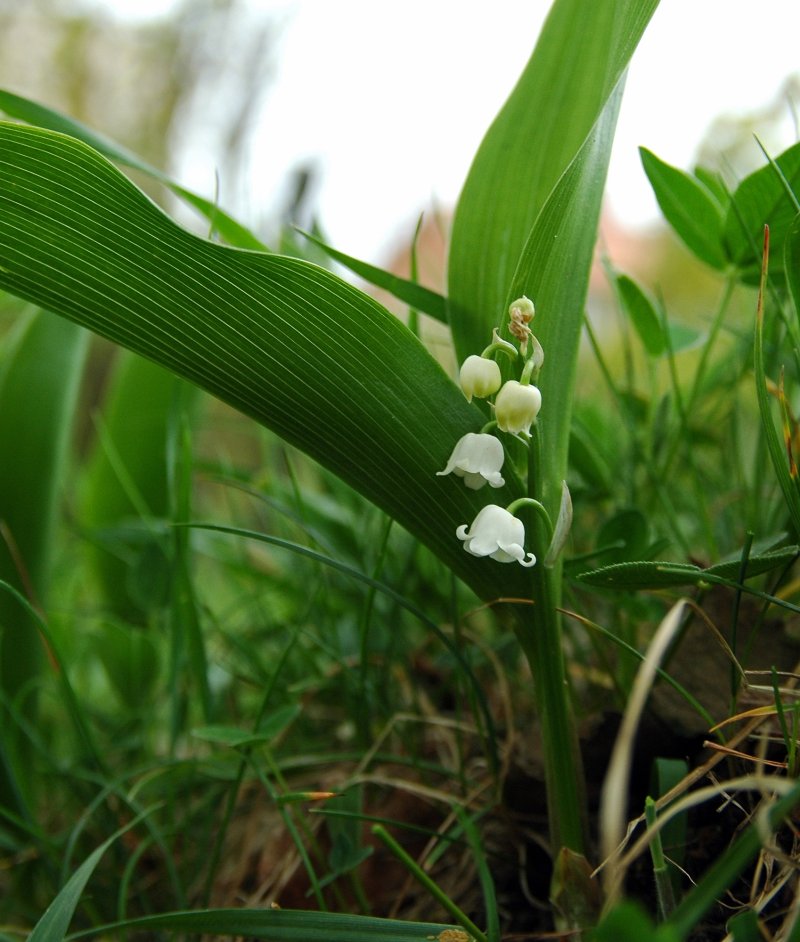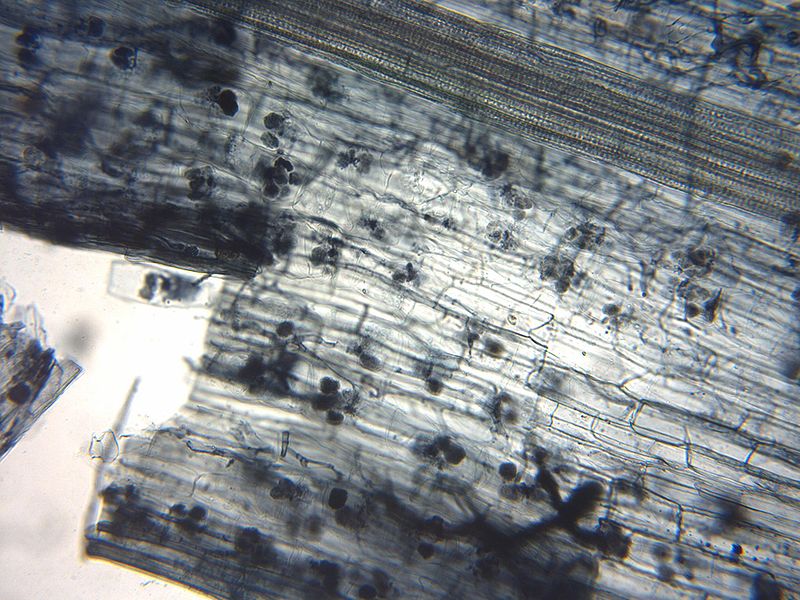
Interactions
It is not realistic to think that Convallaria majalis does not have to share its habitat with other organisms. Some of the interactions that it engages in benefit the plant. However, some interactions are also harmful to the plant. All of these interactions come down to one concept: competition. Organisms participate in these relationships because at least one species in the relationship is benefitting and improving their chances of survival. Symbiosis is the name given to these types of relationships. Depending on how each organism is affected by the relationship, it is also given a more specific title. These titles and definitions can be found more in depth here, with many excellent examples of each type of relationship. But now, onto Lily of the Valley's interactions.

Christer Johansson, Wikimedia Commons, 2007.
Mammals
Convallaria majalis, as stated on the
adaptations page, has deadly toxins
within all parts of the plant. These toxins are deadly to
mammals. This is a major interaction that has allowed
Convallaria majalis to be so successful within its niche.
Without predation by mammals, there the plant has no need to derive
anything more complicated. The
adaptations page has much more
information on how the poisoning actually takes place. To this date,
there are no known mammal exceptions to the toxins of
Convallaria majalis. Since many mammals have similar heart mechanisms,
the effect of convallotoxin is similar in all mammalian cases
of poisoning. Mammals like the
Eastern Grey Squirrel (Sciurus carolinesis), the
White-Tailed Deer (Odocoileus virginianus),
Coyotes (Canis latrans),
House cats (Felis catus), and of course humans can all be victims to the wrath
of the toxins. The most common victims of this type of poisoning is
domesticated dogs.
Birds
Mammals are not the only ones that suffer from cardiac glycoside
poisoning. Most birds also react severely to the cocktail of toxins
within Convallaria majalis. Although birds usually do not
feed on toxic plants, there have been cases where pet birds have
gotten sick from consuming the plant.
Order: Lepidoptera
There is an order within the Insect or Hexapoda class that has
members whose larval forms feed on Convallaria majalis. This class
consists mostly of butterflies and moths, and they are parasitic to
Lily of the Valley, meaning that they only take from the plant
and provide nothing in return. They consume the leaves for nutrition
and can often eat entire leaves before the plant can recover from
the damages. The toxins that affect mammals have no
effect within the bodies of these insects. The
Monarch Butterfly (Danaus plexippus) falls in this
order.
The small number of predators of Convallaria majalis leave
its populations relatively unchecked, which only contributes to its
status as an invasive species.
Mycorrhizae
Most plants exhibit a very unique interaction with a fungus. This
relationship takes place within the roots of the plant. The fungi
will grow on the root of the plant and usually into the
cells of the root itself and formed very branched, high surface area
structures called arbuscules. The structures allow for the sharing
of materials between the plant and the fungus. Both the fungus and
the plant benefit from this, an example of mutualism. What does each
organism get out of this relationship? The plant can produce lots of
sugars, which the fungus is in need of. Plants also provide fungus
with a fairly stable and safe habitat. So Convallaria majalis
gives up some of its sugar, but what does it get it return? The
fungus can provide increased nutrient and water uptake from the
soil. In many cases, it is thought that plants would not be able to
survive with out the help of their fungus counterparts. Who knew
that something that can't even be seen without microscopy and a
well-trained eye could be massively important in nature! Take a
gander at the image below and see if you can spot the web-like
structures growing with in the cells of this plant.

Msturmel,
Wikimedia Commons, 2006.
Time for the REALLY fun stuff! Head on over to fascinating facts to learn more about Convallaria majalis and its amazing ways.